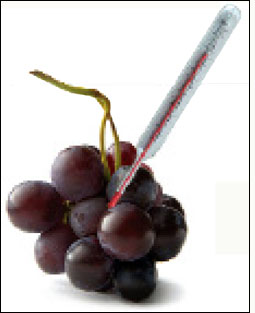Feb 01, 2011It's RFID Journal's tradition to list the top 10 news stories of the previous year in the January issue of our print magazine. But given the plethora of new RFID deployments and maturing technologies, we decided to do some trendspotting instead. The biggest trend for 2010 was item-level tracking. The following four trends also came into focus last year.
1) RFID improves the customer experience. Retailers, museums, amusement parks and sports arenas around the world are turning to RFID to engage patrons. Common People, in Mexico, Staff Jeans, in Greece, and Fly London, in Portugal, are among the apparel and footwear retailers using RFID to offer customers personal attention and make shopping more fun. Some applications recommend garments a shopper might like, others let customers send images of the items they're considering to friends in real time. Visitors to the Chabot Space & Science Center, in Oakland, Calif., and the NASCAR Hall of Fame, in Charlotte, N.C., use RFID cards to activate interactive exhibits. And at Morgan's Wonderland, a San Antonio, Texas, theme park designed for people with physical or mental disabilities, guests wear RFID ID bracelets, so the park knows their health needs and can ensure their safety and comfort.
2) RFID enables social networking. RFID lets people share their real-world experiences in real time. Visitors to the Vail Resorts ski mountains can use their RFID-enabled lift tickets to connect with each other via social-media tools, and also track their ski or snowboard metrics over the Internet. In December, thousands of attendees at the 10-day STRP Festival, in the Netherlands' city of Eindhoven, used passive tags to record their reactions to dozens of interactive art installations, as well as share them on Facebook and Twitter. And last summer, a total of 6,500 Israeli teenagers attending a series of 10 festivals known as Coca-Cola Village used RFID technology to share their experiences with friends and family through Facebook.
3) RFID sensors take hold. RFID, to date, has been largely about identifying objects and tracking their locations. But now, companies are deploying RFID-based sensor systems to determine the condition of items in real time. Driscoll's, a U.S. berry supplier, has adopted an RFID system to track the location, security status and temperature of its strawberries, blueberries, blackberries and raspberries as they are carried by trailer trucks, to ensure its products are transported at the proper temperature. Florida Hospital, one of the largest hospitals in the United States, is using Wi-Fi RFID tags to wirelessly track the temperatures of refrigeration units on seven campuses from a central server. The 2,200-bed facility expects to improve patient safety by using the system to determine when pharmaceutical refrigerators are left open too long or are operating improperly. The teaching and research winery at the University of California, Davis, is using an RFID sensor system to track the sugar content and temperatures of the wine within each of its 152 fermenting vats, gathering the kind of product-quality data not accessible to most wineries.
4) RFID moves beyond the value chain. RFID has been seen primarily as a tool for tracking goods, but innovators are developing other ways to use the technology. In the United Kingdom, University of Southampton researchers have deployed wireless sensor systems to gather information about glacier movement and to forecast mudslides. British sound-engineering firm Out Board developed a sound-locating system using ultra-wideband technology that ensures a performer's voice reaches each seat as if emanating directly from the singer's exact on-stage location. The system debuted in August during a production of Carmen at London's O2 arena. And Meridian Health, which operates five New Jersey hospitals and a home-care service, is using an RFID-enabled pain-management system to monitor the effectiveness of medications patients take at home.

